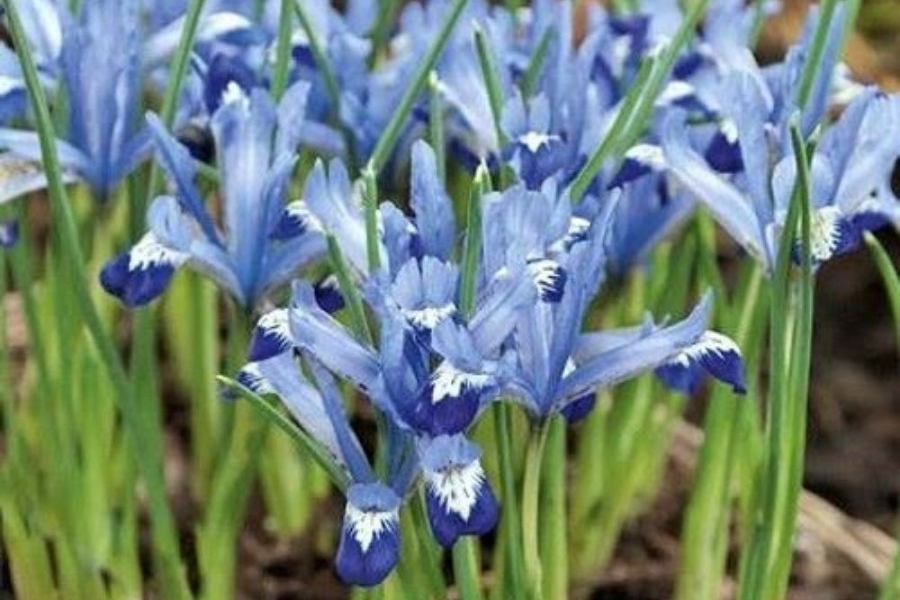
Iris recticulata 'Clariette'
Early flowering bulbs - Iris reticulata
News posted: 1 February 2024 Post by:
Time to read: ~ minutes, give or take.
Dwarf iris (Iris recticulata)
I love these flowers, they are amongst the first to bloom in February adding a great splash of colour when we really need it. They also have a lovely delicate perfume and a long flowering period, so if placed strategically by a path or door they can really lift our spirits when dashing in and out in the late winter weather.
There are many types of iris, but these little flowers (although they look similar to their taller cousins) are grown from bulbs. And what is even better is that they can be replanted year after year, so only have to be bought once.
Iris are native to Turkey and West Aisa, and the rich jewel like flowers, which range in shades from deep azure blue and rich purples to paler yellows and white, remind me of beautiful blue seas and warm sunny days. The plants only grow to 15cm tall and have 3 central upright petals and 3 wider, downturned curved petals around the outside. These outer petals have a striking splash of dappled yellow and white down the centre, which not only look beautiful to the human eye but are a brilliant way of nature guiding early insects to the sugary nectar at the base of the flower. So as not to interfere with the job of the flowers, the thin grass-like leaves appear after the flowering to photosynthesize and build up the bulbs for blooming the next year.
I like to grow iris in shallow containers, where the small pear-shaped bulbs can be planted quite closely together (5-10cm apart) and then covered with a 5cm layer of compost. I forage a bit of carpet moss to place over the top to cover up the bare earth initially, then eagerly wait for the nubs of the new shoots to push through just after Christmas. They can also be used as the top layer of a bulb lasagne above narcissus and tulips, so adding an extra layer of interest to the display. Once the flowers are over, they can be dead-headed and the next layer of bulbs will take the stage. The long thin spiky leaves mix well with the wider tulip foliage and add to the drama.
Once the iris have flowered and the foliage has died down, the bulbs can be stored in a net bag in a cool dry shed and replanted next autumn.
If you have space in a sunny, well drained spot that will be relatively undisturbed, then the bulbs can be planted and left to naturalise. The bulbs will produce many bulblets and the area will bulk out quickly and become a carpet of colour. If they become too congested, they can then be lifted and divided in the summer when they are dormant.
This year, I have chosen two varieties: pale blue Iris r. ‘Clariette’ and the more exotic two-toned Iris r. ‘Alida’, but as my collection grows I am tempted to experiment with the gorgeous dark purple and slightly taller Iris r. ‘Purple Hill’ and the aptly named Iris r. ‘Happiness’, which is a warm joyful yellow. Yellow often gets a bad rap and is not chosen in schemes because it jars with other tones, but at this time of year, while the sun is low, it can give us some much-needed warmth and is a good forerunner to the daffodils in March.